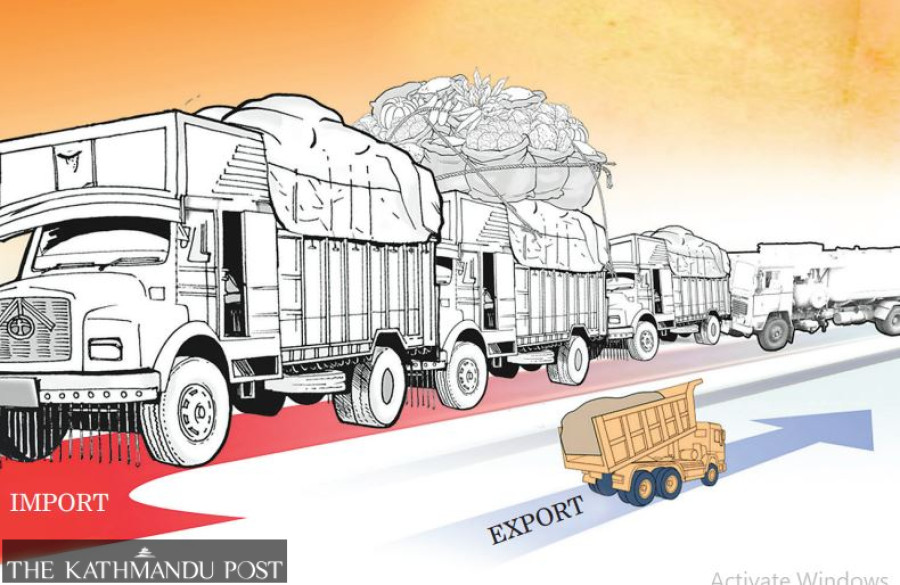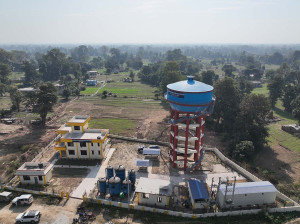Money
Central bank for curbing luxury imports amid falling foreign exchange reserves
Existing foreign exchange reserves are enough to finance just 7.8 months of imports, close to the minimum threshold of seven months set by the central bank.
Prithvi Man Shrestha
With surging imports putting the external sector of the economy (international transactions) at risk, the Nepal Rastra Bank has suggested the government control import of luxury goods, a senior official at the central bank said.
The official requesting anonymity because he is not authorised to speak to the media told the Post that they had suggested the Finance Ministry take certain measures to discourage import of luxury items considering the ballooning balance of payments deficit and decreasing foreign exchange reserves.
“During a briefing at the Finance Ministry on October 25, we recommended some import control measures. But we have not specified what products should be subjected to such curbs because that is the government's job,” the central bank official said.
The country's imports surged by 63.73 percent to Rs478.52 billion against exports worth Rs65.05 billion during the first quarter of the current fiscal year, according to the Department of Customs.
With the inflow of remittances and tourism income, the first and second major sources of foreign exchange respectively, declining, foreign currency reserves dropped sharply in the first two months of the current fiscal year.
Remittances have decreased by 6.3 percent to Rs155.37 billion and tourism earnings stood at just Rs2.7 billion during the period. While foreign direct investment grew 24.6 percent to Rs3.04 billion, the growth is still insignificant amid a massive rise in foreign exchange spending for imports, according to the central bank.
At the end of the fiscal year 2020-21 in mid-July, Nepal’s foreign exchange reserves stood at Rs1399.03 billion ($11.75billion), which was sufficient for financing imports for 10.2 months.
In the two months since, the foreign exchange reserves decreased by nearly Rs100 billion to Rs1306.95 billion ($11.14 billion) in mid-September. This is sufficient to finance just 7.8 months of imports, according to the central bank. The monetary policy for the current fiscal year 2021-22 aims to maintain the foreign exchange reserves enough for financing at least seven months of imports. Any further depletion of the foreign exchange reserves could cause problems.
Basudev Adhikari, former executive director at the central bank, told the Post early this week that reserves coming down close to the minimum threshold set by the central bank suggest the situation has reached a “critical zone”.
“In such a situation, the central bank should give careful consideration to its foreign payment commitments associated with the letters of credit for the next two to three months,” he said. “If there are large amounts to be paid, then restrictive measures such as quantitative limits on certain goods should be imposed or the amount of foreign currency allowed to businesses should be reduced.”
In April last year, the authorities had imposed curbs on the import of foreign alcohol, luxury vehicles costing more than $50,000, betel nuts, peas, peppercorns, and dried dates, in a bid to save foreign exchange, following concerns that Nepali migrant workers in foreign labour destinations could lose incomes due to the pandemic.
“We introduced curbs on imports last year and that can be done this year too considering the ongoing steep rise in imports,” said the central bank official.
Ritesh Shakya, spokesperson for the Finance Ministry, said they are keeping a close watch on import figures including the most preferred import items. “But the ministry has not taken any decision on which imports should be controlled,” he said.
According to him, the ministry recently increased the customs duty on the import of silver. As per the government’s decision, import duty on the precious metal has been fixed at Rs107 per 10 grams.
Since remittances didn’t decrease as projected and foreign exchange reserves also remained in a comfortable position, the government lifted restrictions on different dates, starting October last year.
In March this year, the government had allowed the import of peas, betel nuts, dried dates and peppercorn until mid-July by setting quantitative limits for each item—1,225,290 tonnes for peas, 227,270 tonnes for betel nuts, 41,995 tonnes for dried dates and 140,082 tonnes for peppercorn.
But since the start of the current fiscal year, neither import licences have been issued nor quota fixed for these items. Late last month, the Department of Commerce, Supplies and Consumer Protection had written to the central bank asking not to provide any foreign currency to traders for the import of these items.
“Even though the massive imports are concerning, now is also the time for foreign grants and loans, particularly the emergency credit from the International Monetary Fund which will be received shortly and this may boost our foreign exchange reserves,” said Bam Bahadur Mishra, deputy governor at the central bank.




 7.12°C Kathmandu
7.12°C Kathmandu













